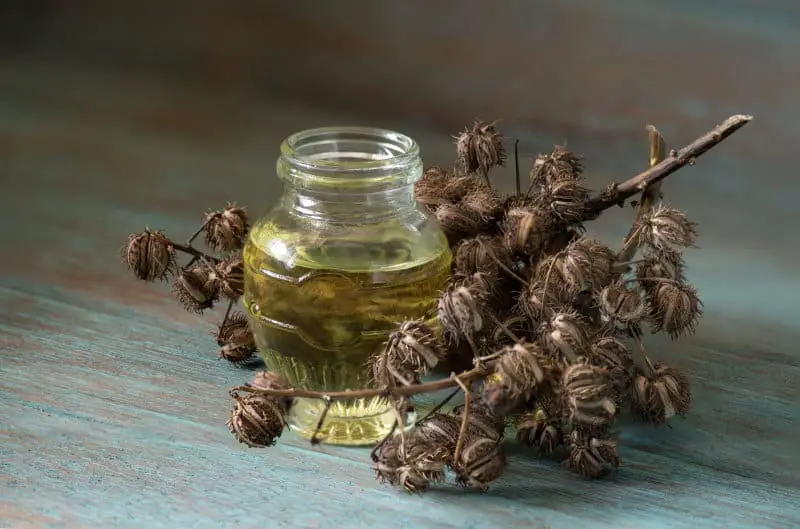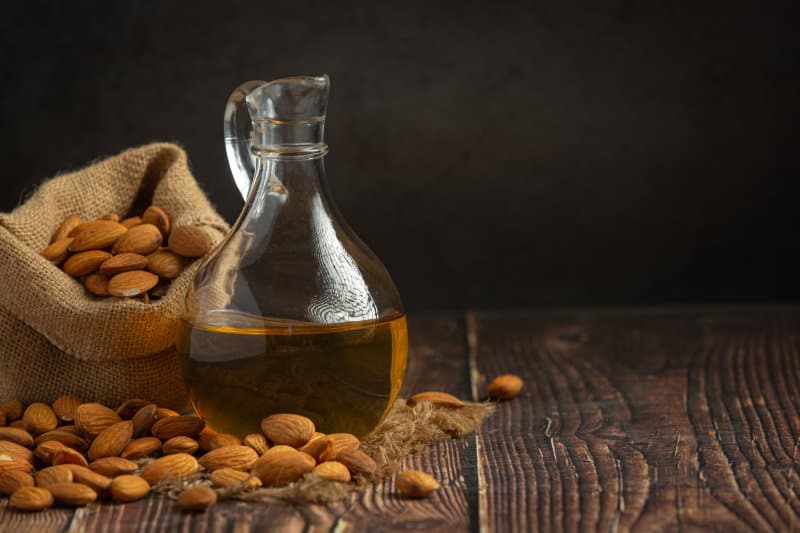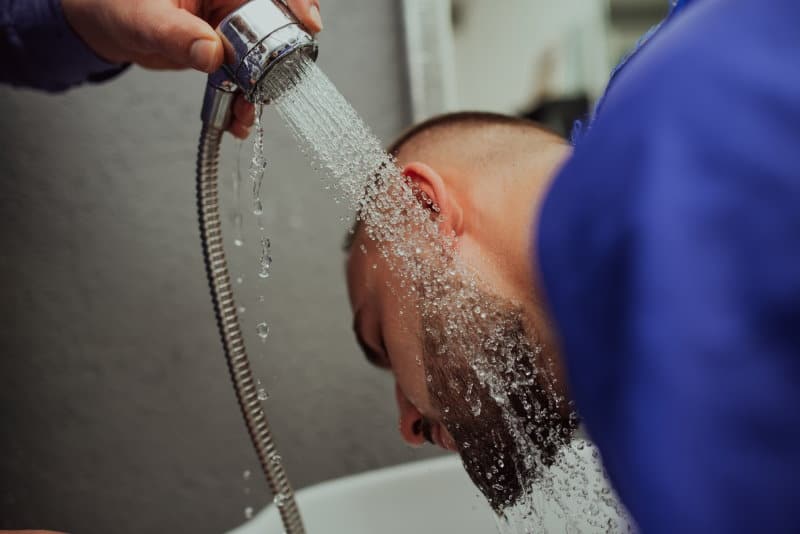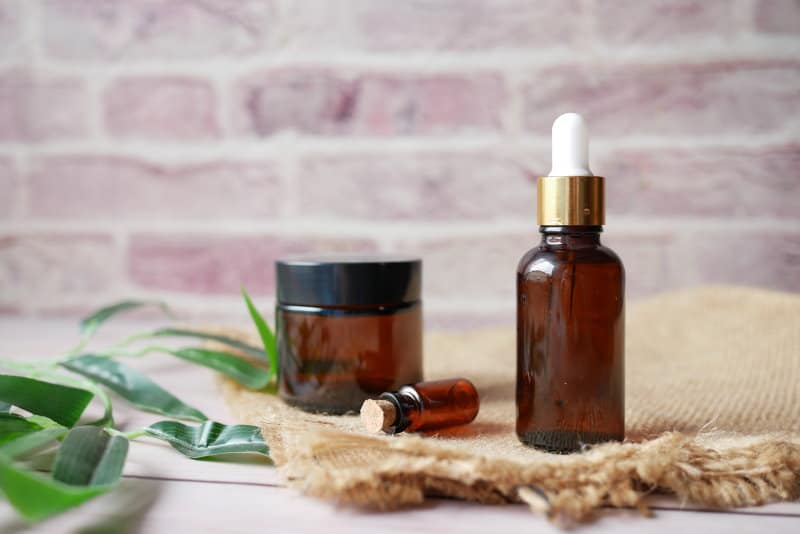When you’re growing your beard out, it’s always helpful to look for ways that can boost your follicles. You’ve probably heard of castor oil and how it’s great for hair growth. Yet, does castor oil help with beard growth?
Castor oil comes with great benefits that help boost hair growth. It has antibacterial and antifungal qualities, as well, that enhance skin and hair health. This is why it can also help with beard growth, shine, and fullness.
Many cultures around the world use castor oil for its cosmetic and medicinal benefits. To learn more about how castor oil is used for beard growth and how to make the most of it, keep reading!
Does Castor Oil Actually Work for Beard Growth?

Castor oil has been used for hair growth and maintenance for centuries. Below are some of the reasons that make this unique essential oil a great addition to your daily beard care routine.
Keep in mind that while castor oil won’t affect beard hair growth rate directly, it can help make your facial hair healthier and fuller in other ways:
- Rich in ricinoleic acid, castor oil has some powerful anti-inflammatory properties
- It soothes the skin and prevents itchiness and irritation
- Is both antibacterial and antifungal
- Minimizes the occurrence of acne and dermatitis that can lead to patchy beard growth
- Softens the skin around the hair follicle and prevents ingrown hairs
- Maintains a shiny beard for a denser, fuller appearance
How to Use Castor Oil on Your Beard
Castor oil is made by solvent extraction or by pressing castor seeds to create a thick, viscous oil. This thick consistency makes it a bit tricky to apply.
The good news is that we rounded up two methods that make applying this dense oil much more effortless.
Take a look.
1. Mix the Castor Oil With a Carrier Oil

Carrier oils, such as jojoba, almond, and argan, are a great way to deliver the benefits of castor oil to each follicle of your beard. These oils have a thinner consistency, which allows them to spread more readily and evenly, and penetrate the skin better.
All you have to do is get half a teaspoon of your choice of carrier oil and mix in 3–5 drops of castor oil. Then, apply the mixture on your beard as evenly as possible, and leave it on for 2 – 8 hours.
If you’d rather avoid oil stains on your pillowcase, pajamas, and blankets, leave it on during the day, rather than overnight. You’ll thank us later!
Next, you’ll need to do shampoo and condition your beard thoroughly. We recommend using a high-quality beard shampoo and conditioner.
It’ll get the excess oil out without stripping your beard of its natural oils. Plus, it won’t dry up your skin or hair follicles.
2. Use Castor Oil on a Damp Beard

This one is pretty straightforward. Simply wash your beard with warm water to open up hair follicles and enhance oil absorption. Next, pat dry your beard until it’s damp.
Put 3 – 5 drops of castor oil in the palm of your hand, and rub your hands together to get a thinner consistency that’s easier to spread. Then, apply the oil to your beard hair from root to tip.
Leave it on your beard for an hour or two at most. Next, shampoo, condition, and style your beard as usual. You’ll notice the shinier, fuller appearance straight away!
Which Type of Castor Oil Should You Use on Your Beard?

If you do a quick Google search, you’ll find several options for castor oil on the market. Aside from the difference in brands, there are also different methods of extraction that lead to different-looking products.
The two most common types are:
Cold-pressed Castor Oil
Cold-pressed castor oil is produced by putting the raw castor seeds under a lot of pressure as a means of extracting the oil. It’s then refined and filtered without heating to produce a slightly viscous, yellowish oil. In this form, the castor oil is thinner and full of natural antioxidants.
This is the more common type of the two and has been used as a laxative by numerous cultures worldwide. Moreover, it’s proved to be an effective treatment for arthritis, as well as a terrific skin emollient.
However, some people report irritation to the skin and eyes when using cold-pressed castor oil. One possible explanation could be the presence of various compounds that cause sensitization.
Roasted Castor Oil
Also known as Jamaican Black Castor Oil, or JBCO for short, this type of castor oil is made by roasting the seeds. Then, they’re mashed and heated before pressing them for oil. Finally, the ash from the hulls is added to the oil, giving it a thicker, more opaque appearance.
The heating process gets rid of some of the benefits of the oil. Yet, on the other hand, it reduces the presence of irritants in the oil. Plus, adding the ash increases the oil’s alkalinity, which enhances its clarifying properties.
However, using JBCO is known to darken the hair considerably. So, if you want to avoid this, use the light-colored, cold-pressed variety.
The most important thing before using either type on your face is to do a patch test. This can help minimize the possibility of an allergic reaction, as well as any skin irritations or discomfort.
If you suffer from eczema lesions, seborrheic dermatitis, or any other wounds or sores, avoid direct application of the oil treatment.
Frequently Asked Questions
Here are some frequently asked questions about castor oil and its benefits for beard growth.
Can Castor Oil Grow a Beard on a Bare Face?
The short answer is no. Beard growth is a secondary sex character directly affected by male hormones, mostly testosterone. Testosterone sends a “message” to hair follicles in the mustache, chin, and neck areas to grow thick, curly hair.
Castor oil does not affect male hormones. Therefore, it can’t jump-start beard growth on a bare face.
How Often Should You Use Castor Oil on Your Beard?
You can use castor oil on your beard 3 – 4 times a week, preferably on alternating days. This way you can get all the benefits, without overloading and clogging your pores. Of course, thorough washing and conditioning should follow each application.
Can Pure Castor Oil Be Used as a Leave-In Beard Oil?
While a small amount of castor oil will give your beard luster and fullness, it’s not recommended to leave it in without washing, mainly because of its pungent odor. Commercial beard oils usually contain other ingredients that help with the fragrance and boost the benefits your beard is getting, such as essential oils.
However, you can make your own beard oil blend using castor oil here.
Conclusion
Does castor oil help with beard growth? Well, whether you opt for the yellow, cold-pressed variety or the black, Jamaican, castor oil can provide your beard with many benefits.
Although it can’t magically grow a beard on a bare face, it can give your beard a fuller, shinier, healthier look. So, if you’re building a care routine for a stronger beard, check out the difference between beard oil and beard conditioner, and when to use each product.

